Framingham, MA, 1951 by Ketchum, Giná & Sharp
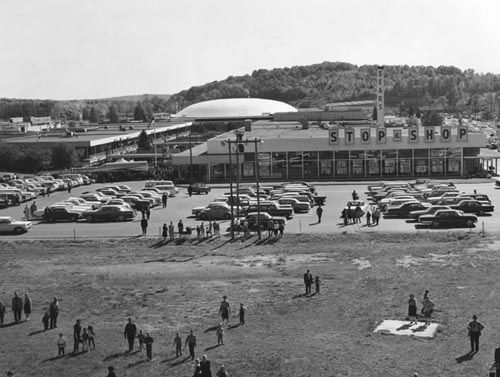
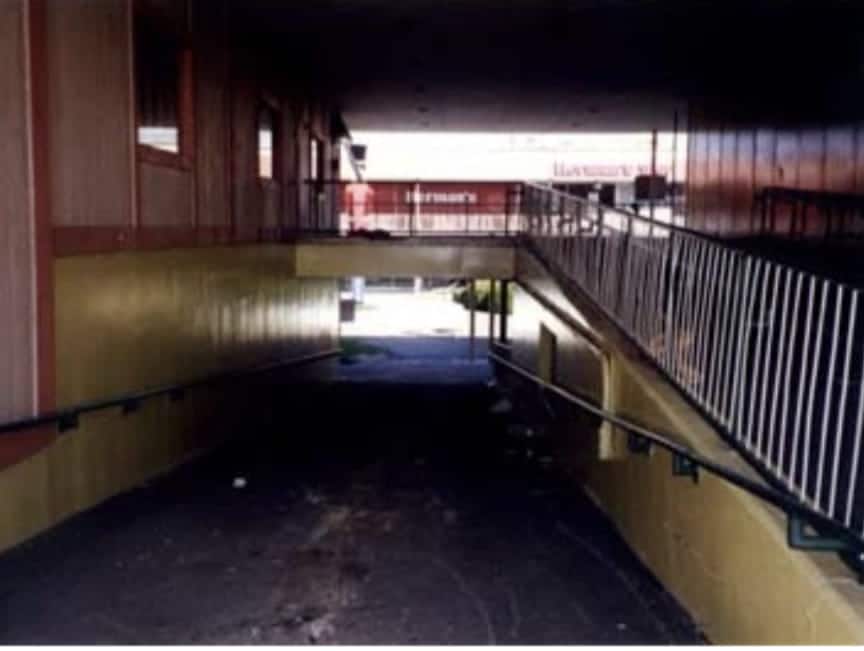
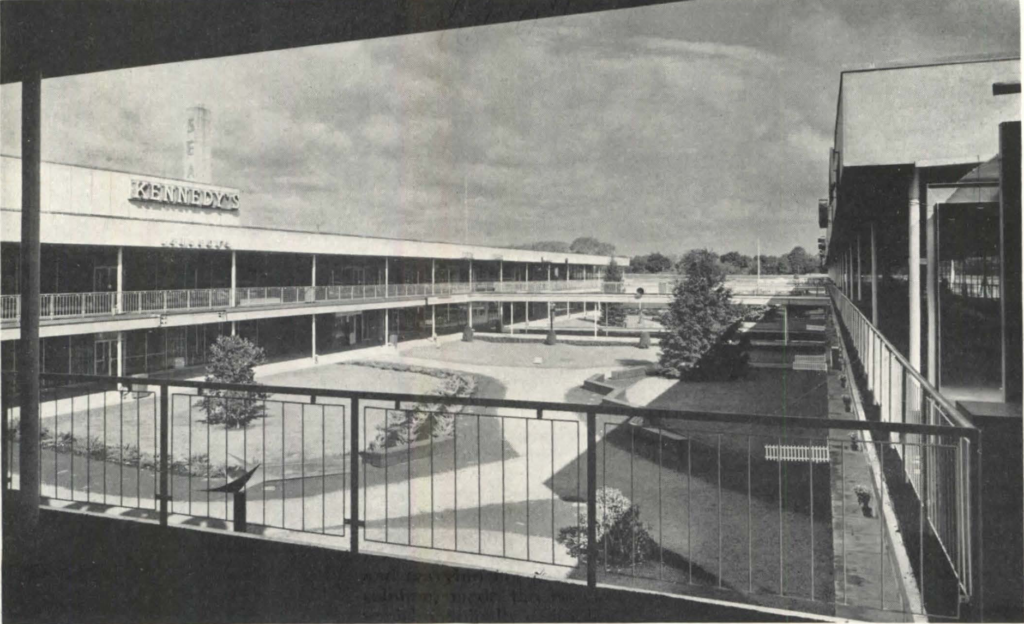
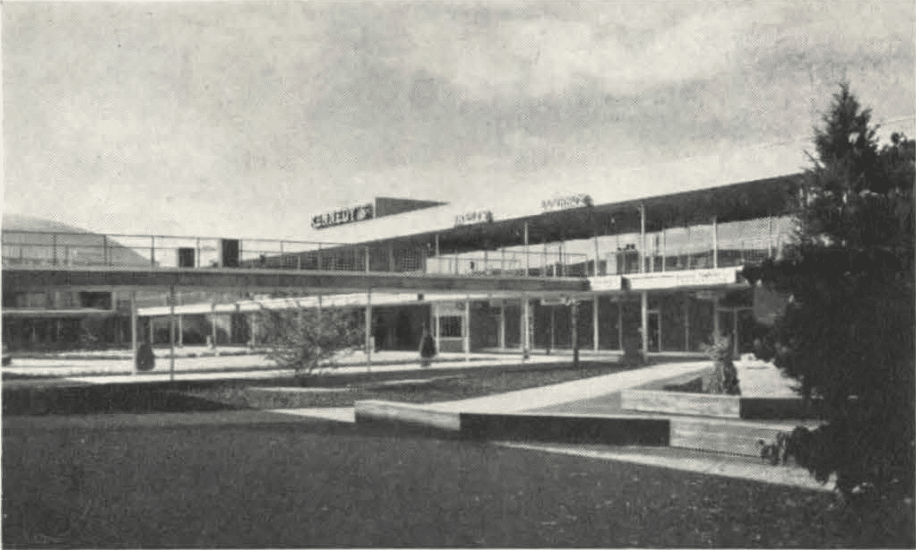
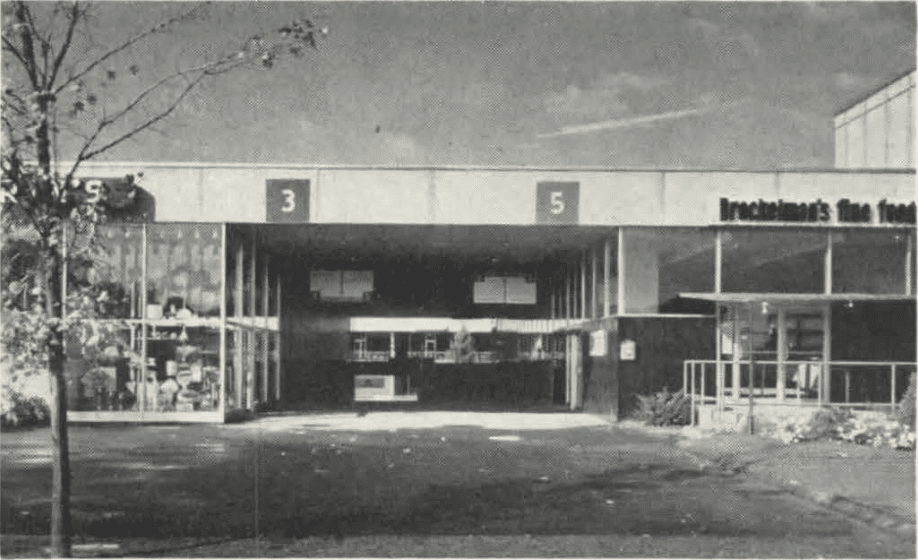
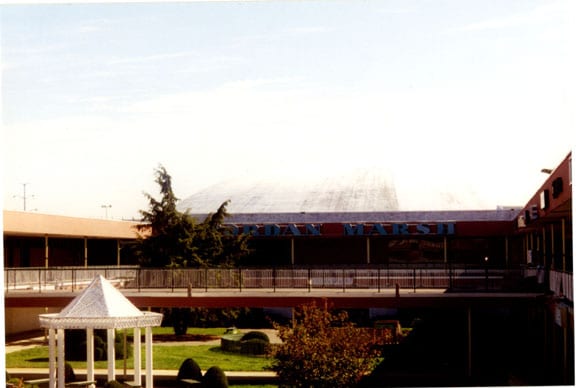

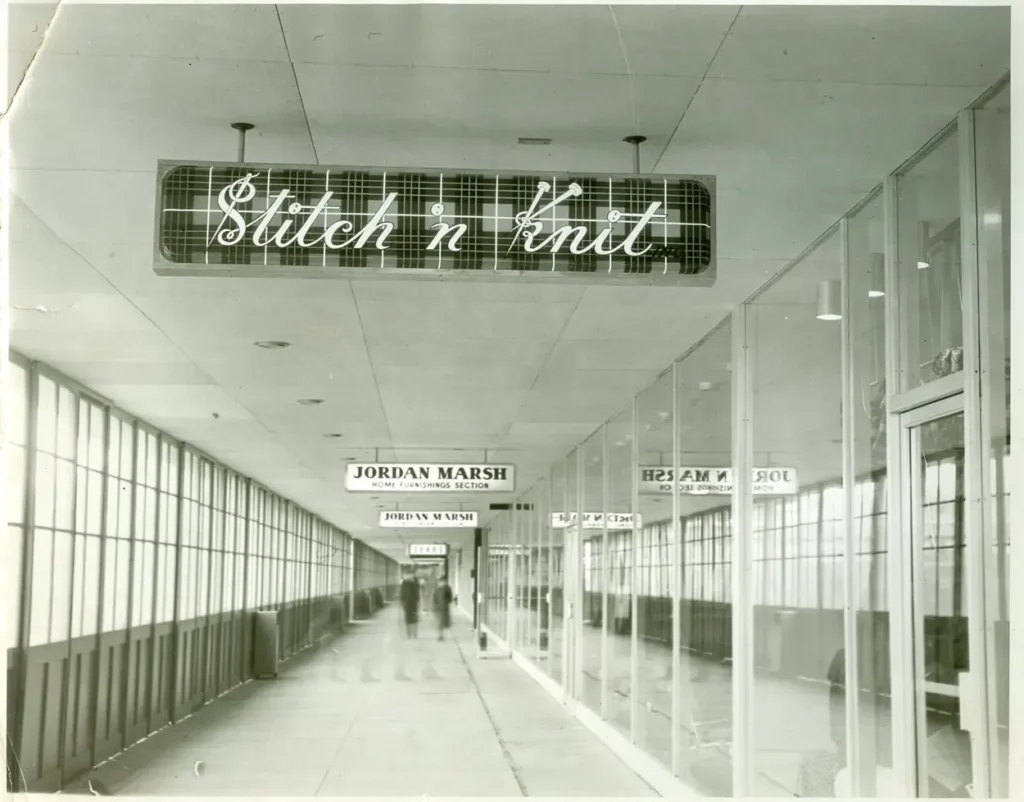
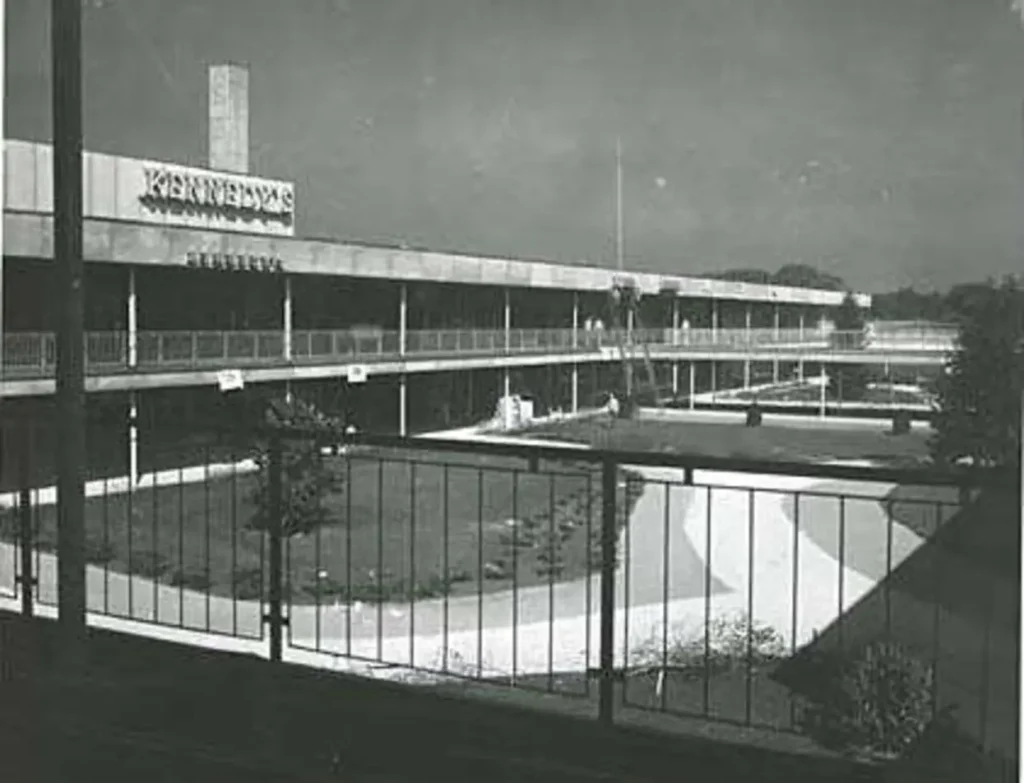
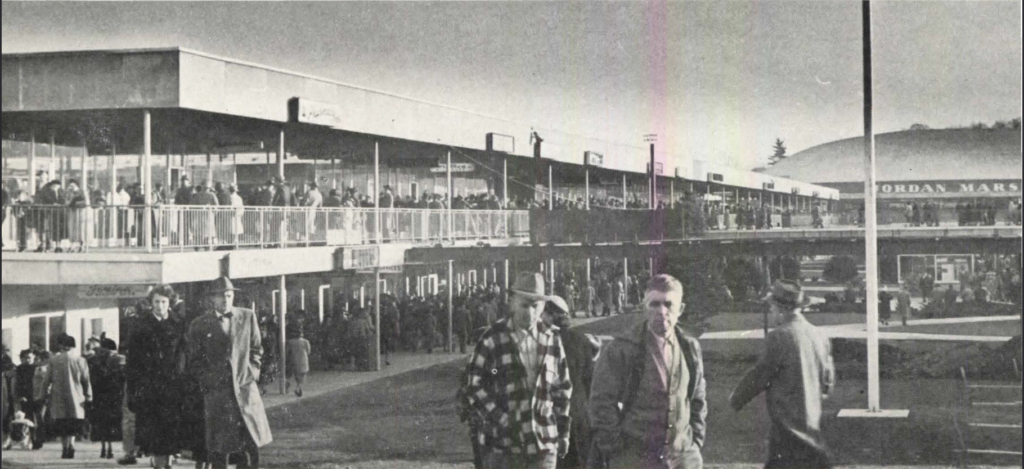
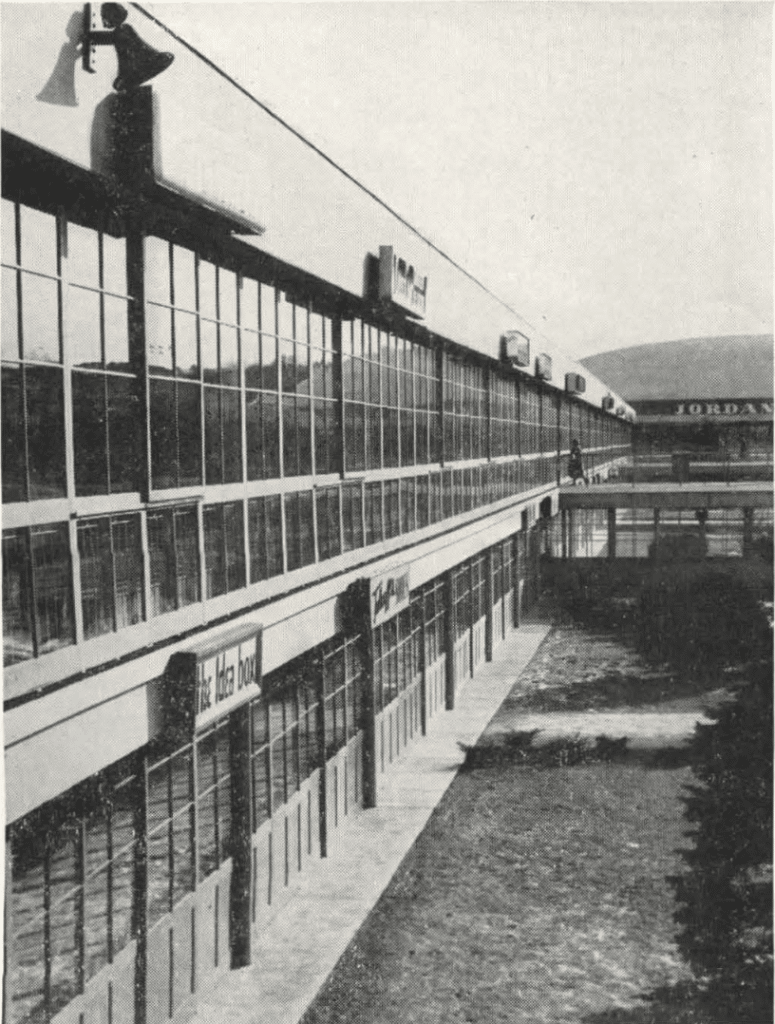
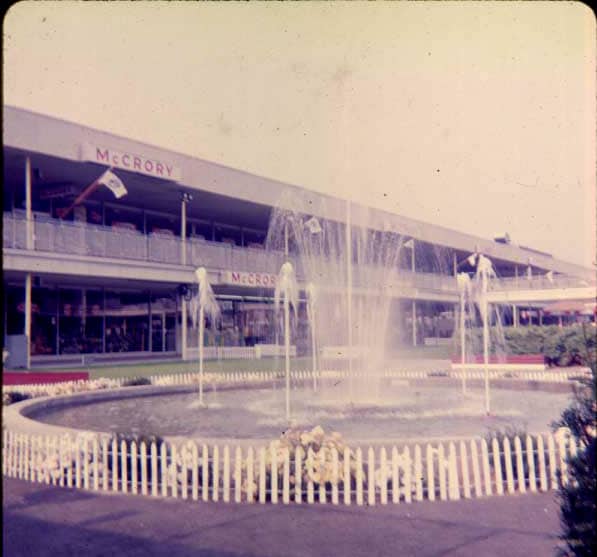
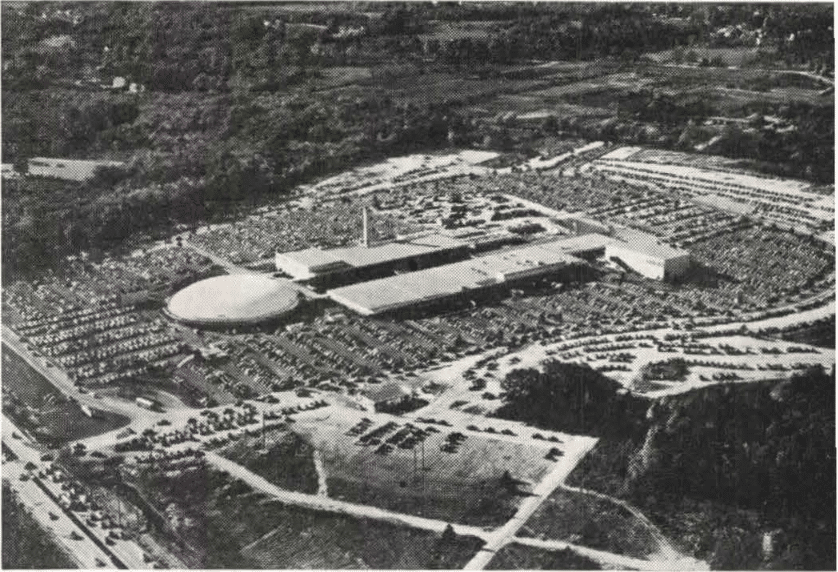
Tell anyone in Massachusetts you live in Natick or Framingham and they’ll inevitably bring up the malls. Since the 1950s, the stretch between the two towns known as the Golden Triangle has attracted visitors from across the Commonwealth and beyond in search of convenience and comfort while shopping. But it wasn’t always like this. When Suburban Centers Trust bought the land conveniently located between Worcester and Boston, it was fairly empty.
That would quickly change with the completion of Shoppers’ World in 1951. As the first of its kind east of the Rockies, the fledgling mall was highly experimental. The building was comprised of two long arms which stretched out from Jordan Marsh, the mall’s anchor tenant – a new concept at the time. Long concrete ramps served as entrances between floors to open walkways lined with stores.
Unlike the many indoor malls we have today, Shoppers’ World was almost completely open. These two story arms encircled a pedestrian courtyard, imitating historic downtown shopping districts. In the winter, these corridors were meant to be enclosed with temporary walls but that rarely actually happened. In its artificial common, the mall hosted events such as petting zoos and circus acts. Unfortunately, to create this space in between the state’s newest highways, the cozy green space was encircled by a sea of parking. At the time however, this car centered development was novel and convenient and the result was a new town center for the community which cemented the structure in the hearts and minds of metrowest.
Unfortunately the new slowly became the old and not even 15 years later the latest mall innovation would move in right next door when the Natick Mall became one of the first enclosed shopping plazas on the East Coast. The two grew almost symbiotically for many years, but slowly the newer, more comfortable mall drained Shoppers’ World of its major tenants. By the 1990s, the building was showing its age. The white walls had been painted over – first a green and then brick red. The ramps and causeways had become dark and dirty and the rotating park attractions dwindled away. In 1994, the majority of the buildings were razed and the green park which had served as the heart of the facility for almost half a decade was replaced with another sea of parking.
Sources:
“‘Shoppers World’ at Framingham Applies New Ideas” architectural Record, November 1951.
Progressive Architecture, June 1952.
Dinneen, Joseph, “‘Shoppers’ World’ Opens Thursday”, the Boston Globe, 30 September 1951.
Leave a Reply